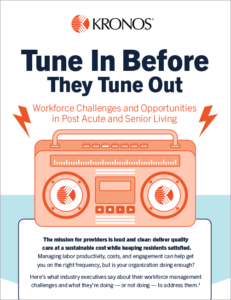Training Staff Online
| BY RICHARD L. PECK, EDITOR-IN-CHIEF |
| Training staff online Does computer-based staff training work? A team of administrators and nursing educators is giving it a try |
| In-service training-a great idea, except for when it doesn’t work. And there are several reasons why the traditional classroom setting often produces less-than-satisfying results. For example, the typical in-service requires pulling groups of CNAs off the floor to sit together in a classroom, resulting in scheduling difficulties. The students so gathered must listen attentively, take notes, and absorb the information, as they did-or perhaps opted not to do-in school. And like those dear-old school days, the students often yield to distraction-chatting, yawning; in general doing what healthy, active groups of people do when they have to sit still together for too long. Admittedly, this isn’t always the case-but it occurs frequently enough to raise concern about the quality of the staff training experience. But what if you could educate staff one-on-one, at a convenient time, place, and pace for everyone? As it happens, that educator’s pipe dream has the potential to come true today, thanks to the possibilities of information technology. One summer’s night about two years ago, nursing home administrators Tamar Abell and Ben Klein sat on the stoop of one of their neighboring homes and groused about the difficulties they were having in keeping their multifacility staffs trained and up to speed. The uneven results they were achieving, they decided, were the source of nearly all the administrative difficulties they faced. What would it take, they wondered, to get through to their staffs more effectively? Both were somewhat computer-savvy and had heard about computerized interactive education being conducted in other fields. Scaring up a little early seed money, they put together a series of eight modules on basic issues such as restraint reduction and pressure ulcer prevention, and each introduced it to eight facilities in their respective chain operations. The facilities in both chains ran the gamut from large urban institutions to small rural nursing homes. They were pleased to find out that computerization allowed for simple tracking of each staffer’s training experience across the entire organization. Thus, rather than having to pull together bunches of scattered sign-in sheets from standard in-services over several months to meet survey report requirements, they pushed a button and got hour-by-hour, month-by-month reports on each staffer’s “attendance” and test performance. But what they really noticed, says Abell, was that after 17 months in operation, the training had resulted in fewer liability claims, dramatically improved survey results, better Quality Indicator reports, and reduced turnover in both organizations. It didn’t take Abell and Klein long to move to the next level, hiring nurse consultants, instructional designers, and programmers to assemble a set of modules on such key subjects as wound management, falls, elopement, and abuse prevention and investigation. Because the modules are available 24/7, they can be used flexibly. Some facilities use them for orientation, others have a “module-of-the-month” club, and some have staffers train at home. The content is geared toward a fifth- or sixth-grade reading level for the core courses, and each module is indeed interactive, stopping and rehearsing the students at any point in the case study, if they go astray, by repeating important information. Every seven or eight screens the students are asked for an active response of some kind to make sure they stay fully engaged during a course that may last anywhere from 20 minutes to an hour. Students’ test performances are tracked from a central location, where a manager can assemble reports on who was hired when, background check results, specific training experience, and test results. And as far as computer-phobia goes, Abell and Klein say that it only takes a brief experience with the system for even the more computer-phobic to feel some degree of comfort with it. So does all this translate into facilities being able to send their staff-development people packing? The people at Upstairs Solutions don’t buy that. “This is really an adjunct to the classroom training,” says Pat DiFiglio, RN, director of clinical education. “However, it takes a lot of pressure off that approach, frees staff to do more on-the-job instruction, and helps administrators trying to keep their training programs and reports organized.” Klein, recalling where his organization was three years ago, has the last word: “In this nickel-and-dime business, it translates into real money when, rather than paying someone to sit in class, you can pay for actual, well-documented training.” Of course, it remains to be seen whether the early successes observed in Klein’s and Abell’s facilities will be replicated by facilities nationwide in the broader rollout of the product that is going on today, although Upstairs Solutions reports that initial feedback is positive. The company is studying that formally, and anticipates having results by the time of the major long-term care conferences this fall. |
| Upstairs Solutions provides continually updated training modules and turnkey implementation for nursing home staffs on more than 50 survey-related topics. For more information, phone (866) 763-4500, ext. 2000, or visit www.upstairssolutions.com. To send your comments to the author and editors, e-mail 4peck0806@nursinghomesmagazine.com. |
I Advance Senior Care is the industry-leading source for practical, in-depth, business-building, and resident care information for owners, executives, administrators, and directors of nursing at assisted living communities, skilled nursing facilities, post-acute facilities, and continuing care retirement communities. The I Advance Senior Care editorial team and industry experts provide market analysis, strategic direction, policy commentary, clinical best-practices, business management, and technology breakthroughs.
I Advance Senior Care is part of the Institute for the Advancement of Senior Care and published by Plain-English Health Care.
Related Articles
Topics: Articles , Leadership , Staffing , Technology & IT











